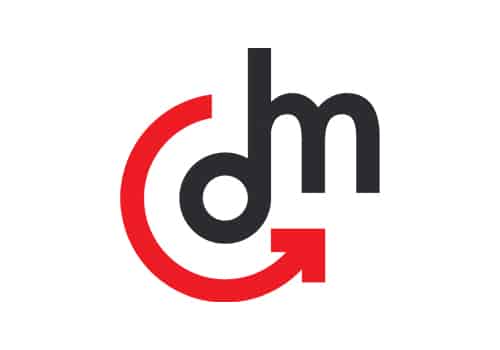The Future of Transportation: Disruption. Innovation. How will Des Moines adapt?
Event preview: Oct. 5 power breakfast

PERRY BEEMAN Sep 23, 2016 | 11:00 am
7 min read time
1,569 wordsBusiness Record Insider, Innovation and EntrepreneurshipTransportation is rife with change, disruption and innovative technologies: Uber, self-driving vehicles and drones, to name a few. Greater Des Moines is looking at a 56 percent gain in residents by 2050. That leads to a series of questions about how our world-class metro will adapt and position itself for smart growth, embrace disruptions, capitalize on new innovations, ensure the region continues to attract top-notch employers and a diverse workforce, and of course, maintain our much-beloved short commute times. For example:
- How will self-driving cars and autonomous Uber-like services affect the city?
- How should the region prepare for new and disruptive technologies?
- Will I-235 and other roads have the capacity to handle our projected population growth?
- What should be done to promote walking and biking as alternative forms of getting to work?
- What does the long-term future look like for mass transit in the region?
- How will Iowa position itself using big data to get workers to work and ship goods effectively?
To spark some thoughts before our full panel discussion, we asked the panelists to answer this question now:
“What is one development in transportation (not necessarily the most important one) that will be disruptive and of interest to business owners in the next decade or two? How will Greater Des Moines handle that?”
Paul Trombino, director, Iowa Department of Transportation
The center of the web of influence of transportation is freedom of choice, economic aspirations, quality of life and connecting people face-to-face. Today’s “connected” world has not diminished our need for in-person interaction; rather, it actually has done the opposite — created an increased demand for movement of a single product or person from one point to another, from everywhere on the planet.
The business of “transportation” is accelerating — the diversity, the information, the data, the means of services and the medium of our products.
There are many disruptive activities happening within and around transportation which I believe to be positive for our future. There are more technology-focused businesses developing products that will have a direct impact on customers and businesses using the transportation system than there have been in the history of transportation. This infusion of technology into vehicles, clothing, cellphones, watches and everything we use will seamlessly connect individuals and products for on-demand movements and will usher in a new era of mobility. This mobility will significantly enhance quality of life and economic opportunity for every person — no one will be left behind. Further, this mobility will challenge the role and need for the traditional government organizations like departments of transportation, transit agencies, airport authorities and metropolitan planning organizations — and many will no longer be needed.
Elizabeth Presutti, CEO, Des Moines Area Regional Transit Authority
One of the most disruptive changes in transportation is going to be the shift away from the personal car, due in large part to the many technologies that have been developed around transportation. UCLA professor David Shoup estimates that most cars are parked 95 percent of the time. With the addition of automated vehicles, Uber and Lyft, car sharing, bike sharing and changing public transportation, people will have more options than ever — and less need to have several cars per household.
As Greater Des Moines looks to the future, let’s think about how these changes in consumer behavior and spending will impact policy and priorities. We clearly need to plan now for the transportation and mobility network of the future. To this point, I’m reminded of a thought-provoking example shared by Eric Crowell, president and CEO of UnityPoint Health-Des Moines and co-chair of the Transit Future Work Group: “What if Kodak had been in the business of images rather than staying steadfastly in the business of film?”
We face a similar choice for our future. What if our region, and its public transportation provider DART, was in the business of mobility rather than just buses?
Larry James, counsel, Faegre Baker Daniels LLP, and governance chair, Urban Land Institute Iowa
Automated vehicles are coming much faster than we think. They promise to transform real estate development and city form. Without a need for parking, former parking lots and garages will be promising sites for redevelopment. Any developer who is currently building or planning a parking garage should make certain that the structure could be converted to office or housing. Home garages will be remodeled into living space and homebuilders will no longer see a need to emphasize three-car garages. Rather than owning a car, most people will be able to subscribe to a monthly ride service where, like Uber, rides will be summoned via an app. The question for policymakers and city planners will be how to address these changes through the zoning code. Without the need for parking, why continue to have a minimum parking requirement?
At the same time, bicycle use is skyrocketing throughout the United States. Communities like Minneapolis that have invested in on-street bicycle infrastructure have seen huge increases in bicycle modal share. People in these communities are embracing bike commuting as a way to exercise without going to the gym. Increasingly, protected bike lanes are expected and demanded by an ever-mobile millennial workforce. Des Moines is poised to make similar investments to connect our bike trails to the core of downtown in order to continue to attract and retain this demographic.
Kerty Levy, entrepreneur and member, Des Moines Airport Authority Board
I have lived in Greater Des Moines since the end of 2002. Changes have been impressive; to people who grew up here and return after many years, they are viewed as amazing, but they have come at a pace that I have processed as exciting progress. More destination venues and amenities popped up downtown. More people moved into the center. More creative organizations developed. More national brands set up shop here. The biggest change I have witnessed during the last 14 years has been the height of my daughters, one of them was born in 2003 and is now 6 feet tall.
I wonder how the next 14 years will feel. Let me paint a potential travel morning in my life on Oct. 7, 2030, 14 years from now.
It’s early, still dark out. My bags are packed, I have already checked in and I have used my mobile device to summon my driverless pod to pick me up and drive me to the airport to catch my flight. The ride will be paid for with the app I’m using, and it will cost just about $5 to travel the 6 miles from my house to the airport.
I arrive at the airport and walk into the terminal. There are other travelers entering now as well. I walk up to a wall of bins with sliding doors. I scan an app on my mobile device and the door opens. I put my checked luggage, which is equipped with my e-tag, inside and the door shuts. My mobile device lights up with a message, “Your luggage has been received and will be waiting for you in Denver.” I walk to security. There is no line.
I approach one of many screens next to a gate and swipe my mobile device across a pad to let the airline know that I am actually at the airport and to complete my prescreen. A gate opens and I am then directed by the direction of the open gate to the green tunnel. It’s a 21-foot-long tunnel. I walk past three scans, X-ray, metal and liquid. Had I been directed to the other tunnel I would also have had to walk past a shoe check, a test for explosives and a full body scan that would have detected nervous or strange facial expressions or heat emanating from my body, which might indicate that I have something to hide.
After I walk through the tunnel I proceed to the airline gate. The door at the gate requires a scan of the app on my mobile device in order to open. I walk down the jetway and onto the plane. I sit in my assigned seat and utter my first words to another human being that day. The seat I’m sitting in senses that I’m cold and heats up. An autonomous cart comes by later and offers me refreshments. What I have entered is a fuselage pod that will later be attached to a set of wings along with two other fuselage pods carrying cargo or passengers but owned by different airlines.
I think these changes will feel very big. I don’t know that all will be implemented by 2030, but the experiences described above have been rendered by engineers with real assumptions, are in heavy testing, and have specific launch dates or are already operational somewhere in the world today.
Todd Ashby, executive director, Des Moines Area Metropolitan Planning Organization
The advancements in technology that allow for autonomous vehicles will bring challenges and opportunities for both governments and businesses. Governments will need to decide how they will incorporate these tools into their infrastructure development and what types of autonomous use will be allowed in their communities. Businesses, particularly trucking — which has a driver shortage — will be able to use new technologies to meet service demands that they can’t now. However, before large fleets of autonomous vehicles hit the roads, a lot of decisions will need to be made on how they interact with the rest of the vehicular traffic.








